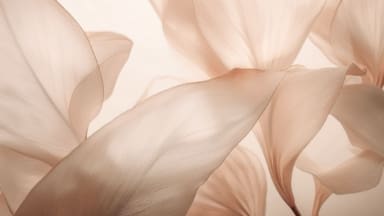
The Pantone Colour of the Year program looks to engage the design community and colour enthusiasts in a conversation around colour, highlighting the relationship between colour and culture.Every year, Pantone selects a colour that in their view, captures the global zeitgeist in a chosen colour that expresses the global mood and an attitude.
For 2025, the Institute has selected PANTONE 17-1230 ‘Mocha Mousse’- a mellow brown “infused with a sensorial and comforting warmth”. According to the Institute, Mocha Mousse “blends our desire for comfort and opulence to present a tasteful touch of glamour. An earthy yet refined brown PANTONE 17-1230 Mocha Mousse nourishes our senses. Sophisticated and lush, yet at the same time an unpretentious classic, PANTONE 17-1230 Mocha Mousse evokes a feeling of the comfort of home whether appearing on flooring or a painted wall, within home décor or in more natural materials including wood and stone, rattan and wicker, leather and linen”.
Plants to match ‘Mocha Mousse’.
The Royal Horticultural Society (RHS) has selected a list of plants to match Pantone Colour Institute’s Colour of the Year 2025, ‘Mocha Mousse’.
The curators of the RHS Herbarium, a collection of almost 100,000 plants, have matched Pantone ‘Mocha Mousse’ with colour 177D in the RHS Colour Chart identifying five plants that can be easily enjoyed in gardens, big or small.
- Digitalis parviflora ‘Milk Chocolate’ – This foxglove provides a subtle pop of colour for any garden operating with a cosier palette. With its silvery-green foliage, the warming Mocha Mousse shade to its flowers, shooting up in a summer raceme could provide a pop of colour to any meadow or wildlife garden, or as underplanting for shrubs and trees.
- Geum ‘Lisanne’ – These perennial flowers with a rich, sun-like bloom, beautifully complemented with its calyx of Mocha Mousse as it flowers throughout spring and summer. Happy in any kind of well-drained soil, this plant prefers a sunny position in the garden and thrives from acidic to alkaline soil.
- Acer saccharinum – The largest plant on this list, a tree that can exceed 12m, the subtle touch of Pantone’s Colour of the Year 2025 Mocha Mousse can be seen tucked between the reds and yellows of this maple’s autumn foliage and bark. Requiring a slightly sheltered position, with a fair bit of sun, this tree provides shade right up until winter when it blankets the ground with the warm tones of its fallen leaves.
- Carex Milk Chocolate (‘Milchoc’PBR) – A small hummock-forming sedge whose grass-like leaves glow with pale chocolate notes resembling Mocha Mousse throughout the year. This sedge thrives in sheltered and partially sunny spots in any reasonable garden soil and will reward you with dependable form and colour.
- Miscanthus sinensis ‘Septemberrot’ – A tall-growing elegant grass with emerald, green blade-like leaves and noted in RHS trials as the best autumn miscanthus. Flowering in September, its airy flowers develop autumn tints perfectly matching Pantone’s Colour of the Year 2025, held above and complementing its rich, red orange autumn foliage.
With its 920 colours, The RHS Colour Chart can be used for documenting plant colour. It serves horticulturists’ need to record the colour of plants as slight variations in colour are significant in distinguishing between different varieties or cultivars. The use of the colour chart also ensures that planting colour schemes are more effective and aesthetic.
The use of the RHS Colour Chart extends beyond the horticulture industry, where it has been used for colour quality control by food and fabric manufacturers, as well as in the fashion and interior design industry including ice cream brands and in the manufacture of glass eyes.

